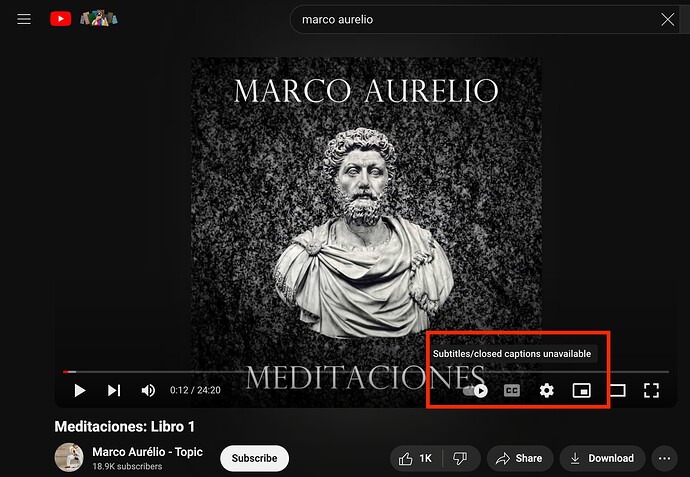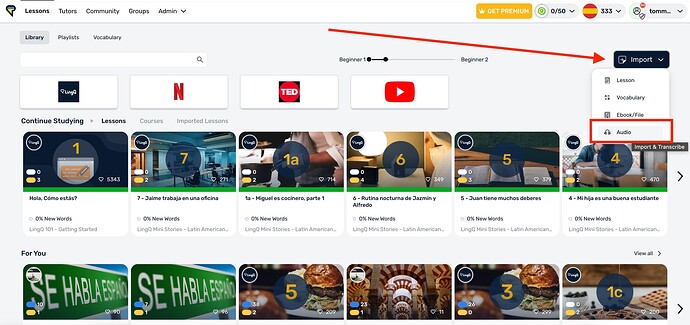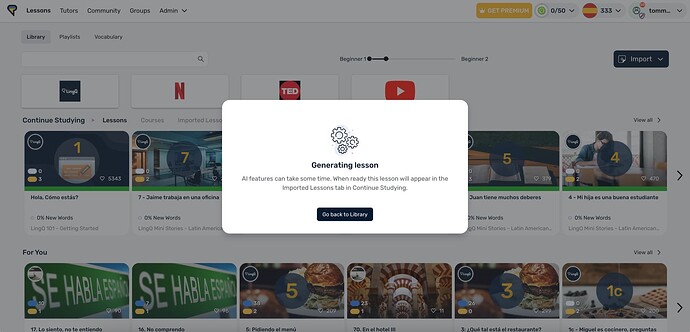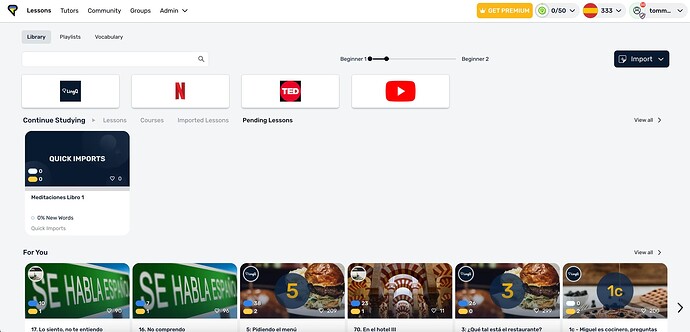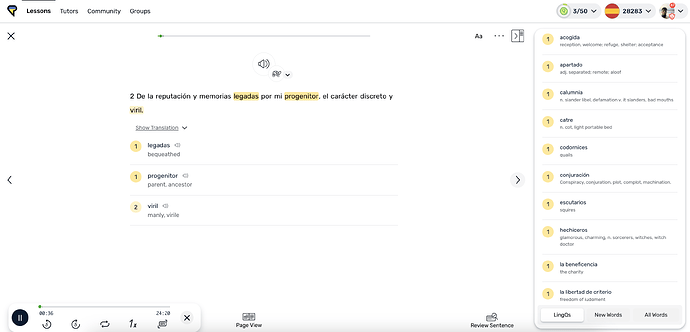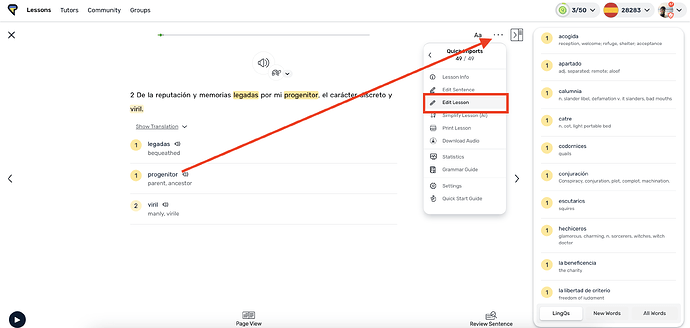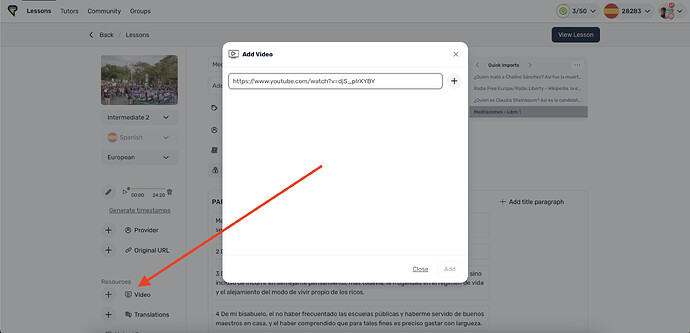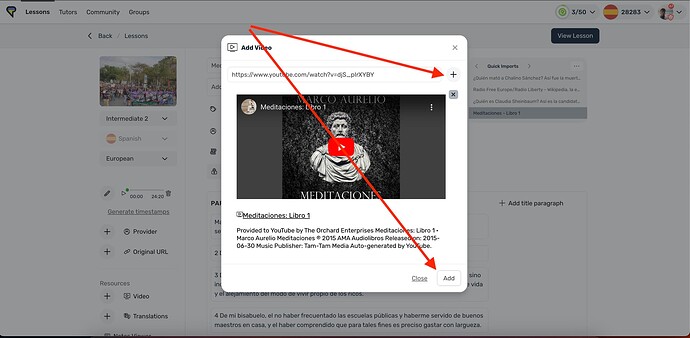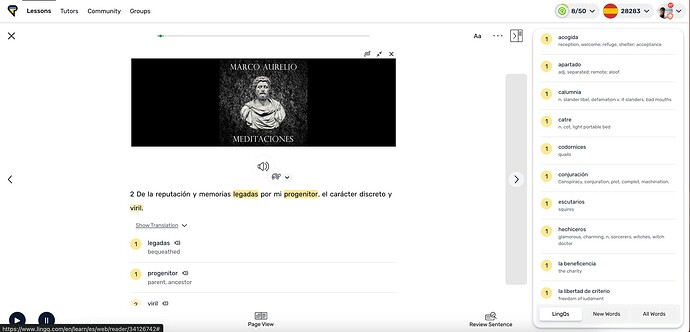The LingQ Importer extensions no longer support Youtube videos without captions. Still want to learn from that video? Here’s how to do it.
Why we disabled importing via Whisper AI directly
Previously, using Whisper AI it was possible to import videos captions using the extension. This process relied on downloading the audio, then processing it using Whisper AI to generate a transcript. However, Youtube actively works to prevent the ripping of audio from videos, which makes this solution unreliable, making the user experience frustrating and requiring a lot of support and maintenance. To prevent this ongoing poor experience for users, we have disabled this capability and instead focused our resources on making sure that the many videos with captions, even automated captions, work well and are formatted correctly.
The workaround solution
However, there are many great videos without captions and it is still possible to import these into LingQ using Whisper.
Here’s how to do it:
-
Convert Youtube video to mp3: There are a number of online tools that convert Youtube videos into mp3 files. (For example: https://cnvmp3.com/). Paste in your video link into one of these tools and download the mp3 file.
-
Open the LingQ web app
-
Click the blue “Import” button in the top right corner of the Library.
-
Choose “Audio” from the Import button dropdown menu.
-
Select the mp3 file you just downloaded
-
Fill out the lesson details (Title is required) and click Add
-
You should see a message that confirms the lesson is being generated.
-
The lesson will then show up in “Pending Lessons”
-
While you wait for the lesson to generate, feel free to open another lesson, listen to your Playlist, or do a vocabulary review session.
-
In a few minutes, the lesson should be ready and appear in the “Lessons” tab of “Continue Studying”
-
Open the lesson and enjoy.
-
To add the Youtube video to the lesson (so you can watch it in LingQ), click the three dots in the top right corner of the Reader/lesson. And then click “Edit Lesson.”
-
In the lesson editor, scroll down a bit and click the Video option in the left-side menu and then paste in the Youtube URL.
-
Click the plus button (+) to the right of the video URL field. And then click “Add” at the bottom.
-
Once the lesson saves, click View Lesson. And then you will find the video button in the bottom left corner of the Reader. Click on that to open the video window.
